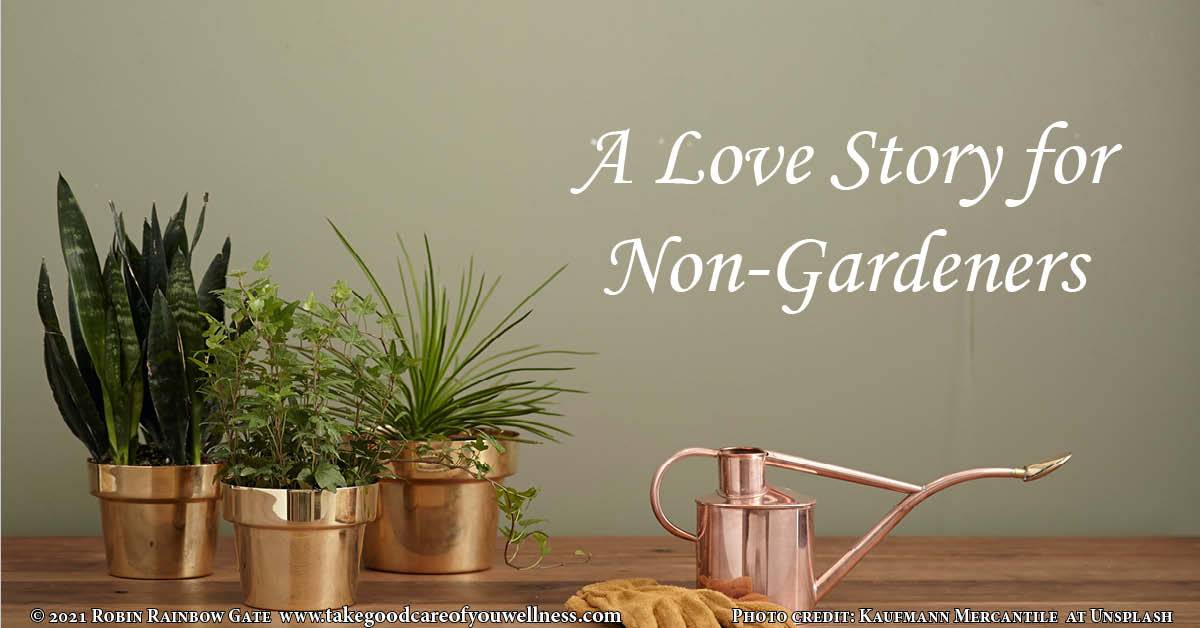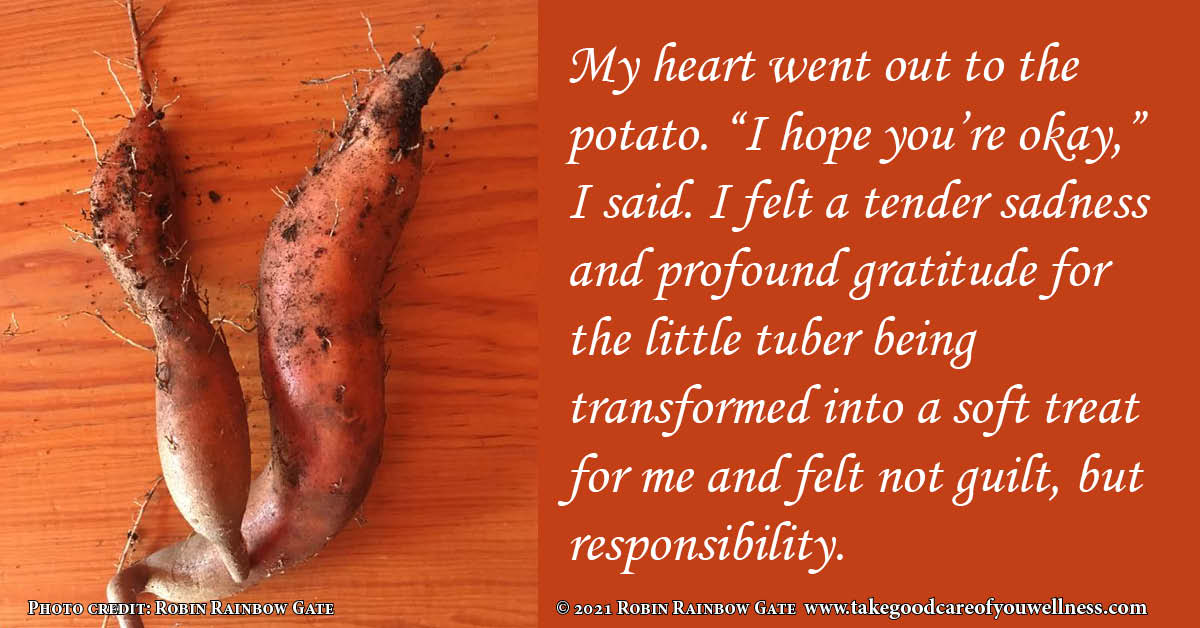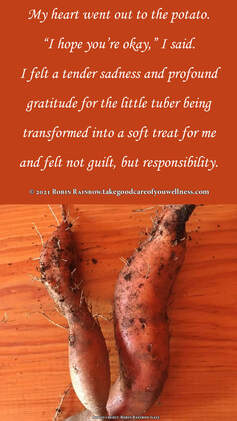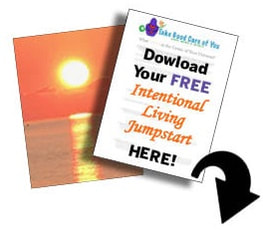|
About six months ago I bought a sweet potato, called “camote,” where I live in Mexico. Before I used it, it started to sprout a little. I’d heard of growing vegetables from scraps and the idea had inspired me immensely. So simple it made me chuckle with glee. When I saw my camote getting a head start, I researched how to grow sweet potatoes from scraps. The instructions seemed doable and so I began the process. The end of the sweet potato that I cut sat in a little cup of water for about a month. When the leaves and roots were plentiful, I transplanted the camote to one of the pots in front of my house where I always have something edible, whether it’s culinary or medicinal herbs, or greens such as quelite (a wild green that grows among corn) or arugala. I kept my eye on the plant over the months, watering it after few days when it wasn’t the rainy season. The leaves were dark green and thriving. After some time it appeared the plant was spreading, as I spotted several tubers under the surface of the soil. The other day, about six months after the planting, I harvested a couple of the sweet potatoes. Sweet little curvy roots. I felt excited and grateful. Cooking my sweet potato I kept the sweet potatoes on the counter for a few days, reveling in their existence, sweet little roots with dark soil remnants resting, echoing the liveliness that had occurred underground all those months. As I ate my quinoa veggie salad, one of the sweet potatoes was boiling gently in a little water. From my dining room table my mind kept traveling to the little potato cooking in a bit of water in the kitchen. My heart went out to the potato. “I hope you’re okay,” I said. I felt a tender sadness and profound gratitude for the little tuber being transformed into a soft treat for me and felt not guilt, but responsibility.
This living thing was giving its life for mine. I made that happen by pulling it from its home and putting it on the fire. I felt care and concern for this creature that I had cared for for months. I never imagined I would feel that way about sacrificing an edible plant I had cultivated. I went to the kitchen and uncovered the pan. I probed the flesh with a knife. It was soft enough. Placing the sweet potato in a bowl with a smidgeon of ghee and sea salt nearby, I returned to the table. I took the first bite. The potato had indeed grown sweetly. It had given me its sweetness. The flesh was a beautiful orange, the color of most of the walls in my house. A warm color that has been my friend for years. Every bite was conscious, appreciated, precious. I was touched by this life that I had helped. By its liveliness. This truly was a being giving its life for mine, and I felt humble. Today me, the non-gardener had a taste of what perhaps many gardeners feel as they harvest, prepare and eat food they’ve helped to grow: I always give thanks before a meal. I appreciate the elements and people involved in the production of the food I eat. But this sweet potato was different from all the other vegetables I purchase in the open air market. This sweet potato felt much more alive to me than anything else I’ve eaten. Because I had a loving relationship with it. And that connection makes all the difference. Eating responsibly It is truly the responsible way to eat, just like I’ve thought since I was 15 that if one is going to eat meat, one ought to be able to look the animal in the eye, ask for its life, kill it, and do all the field dressing afterward. Otherwise, one has no right to eat animals. Because I did not know how to do this and didn’t want to, when I was a teen, I became a vegetarian, as a matter of principal. Years later, I did learn how to “sacrifice” some animals and field dress them. I had earned the “right” to eat meat from my wise awakened 15 year-old perspective. Years later, I did start to eat meat – but not from animals killed by me. Now I see that it is no different with plants. Participating in the cultivation of this one little part of the food I eat, showed me the true value of relationship with the vegetable beings through gardening. If you are wanting to live a more simple life and are struggling with all the parts, where to start, and how to do it – from where you live to what you eat, I can help. To learn more about my life and evolving relationship with food, nature, myself and simple living, I invite you to read my memoir, Calling Myself Home.
0 Comments
Leave a Reply. |
Robin Rainbow GateI help people midlife and beyond to find their inner power, health and well being through slow, conscious living Ready to live Your True Life?Categories
All
|
|
|
Sign up here for
|
 Take Good Care of You Wellness Website and Contents by Robin Rainbow Gate is licensed under a Creative Commons Attribution-NoDerivatives 4.0 International License. |





